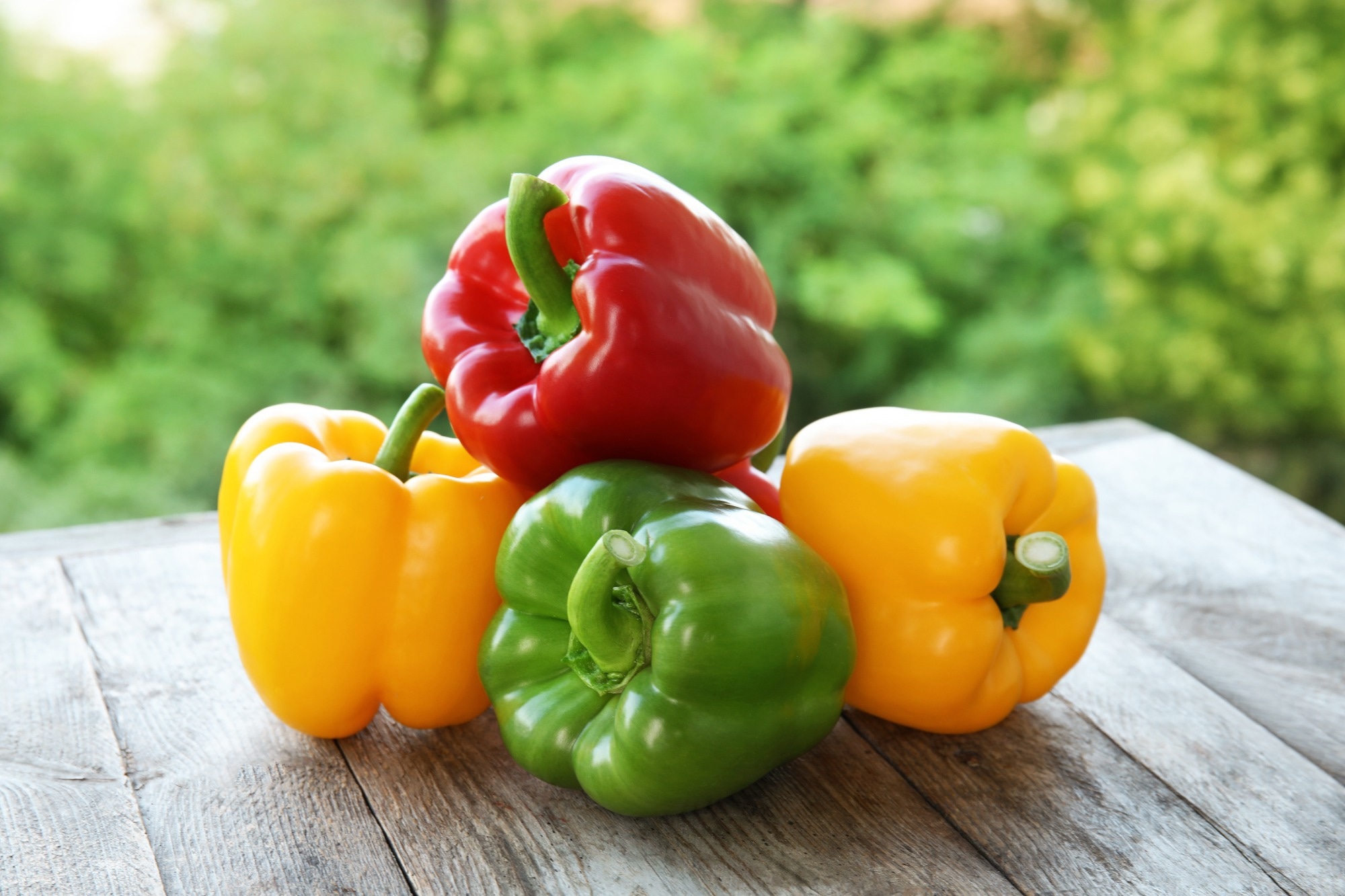 By Pooja Toshniwal PahariaReviewed by Lauren HardakerOct 16 2025
By Pooja Toshniwal PahariaReviewed by Lauren HardakerOct 16 2025In a recent study published in ACS Omega, researchers investigated millicompost, an organic material derived from agricultural and urban waste, as a sustainable, cost-effective alternative to peat for urban agriculture.
 Image credit: New Africa/Shutterstock.com
Image credit: New Africa/Shutterstock.com
They found that millicompost, alone or mixed with gliricidia and coconut fiber, can replace peat for bell pepper seedlings, producing vigorous, high-quality plants while potentially reducing reliance on costly commercial substrates. By converting agricultural and urban waste into nutrient-rich growing media, this approach promotes circular, resource-efficient urban farming for affordable and environmentally responsible seedling production, feasible for smallholders and city farmers.
The production of healthy vegetable seedlings, such as bell peppers (Capsicum annuum L.), depends on using efficient and nutrient-dense substrates. While commercial substrates are widely available, many rely on peat, a non-renewable resource extracted from ecologically fragile peatlands that serve as vital carbon sinks and biodiversity reserves.
Peat extraction contributes to habitat loss and environmental degradation, prompting the need for environmentally friendly replacements. Moreover, conventional substrates often require frequent fertilization due to limited nutrient content. Therefore, identifying eco-friendly, nutrient-efficient substrates is crucial to improving seedling quality, supporting renewable agriculture, and reducing the environmental impact of current seedling production practices.
About the Study
In the present study, researchers evaluated the potential of millicompost-based substrates as green substitutes to commercial peat-based media for producing bell pepper saplings in urban agriculture.
The researchers produced millicompost from agricultural and urban green waste, which served as the primary substrate. They combined it with various proportions of locally available agro-wastes, coconut coir (Cocos nucifera, CCF), gliricidia shavings (Gliricidia sepium, GLI), and elephant grass (Pennisetum purpureum, PP).
The study tested nine substrate formulations for bell pepper seedling production. These included pure millicompost (S1), a commercial pine-bark substrate (S2), and several blends of millicompost with local organic materials. S3 combined millicompost, GLI, and PP in equal parts; S4 mixed millicompost, CCF, and GLI; S5 included millicompost, CCF, and PP; S6 combined equal parts of millicompost, GLI, PP, and CCF; while S7, S8, and S9 paired millicompost 50:50 with PP, GLI, or CCF, respectively.
The team produced millicompost in an open area of the Atlantic Forest Biome, Rio de Janeiro, using tree prunings and garden trimmings decomposed by millipedes (Trigoniulus corallinus and Rhinocricus padbergi). They performed the experiments between June 27 and August 1, 2019, at Embrapa Agrobiologia, Seropédica, in tropical humid climatic conditions (mean temperature, 24.5 °C; annual rainfall, 1,213 mm).
The researchers sowed bell pepper seeds in polystyrene trays under greenhouse conditions and evaluated them at 35 days. Assessment parameters included shoot and root dry mass, plant height, number of leaves, clod stability, and seedling vigor. Researchers also analyzed the physiochemical properties of substrates, including porosity, density, water retention, pH, electrical conductivity, and nutrient content (nitrogen, phosphorus, potassium, calcium, and magnesium).
Results
The millicompost-based substrates significantly enhanced bell pepper seedling development, outperforming the commercial control. Seedlings cultivated in S1 exhibited the highest shoot and root dry mass, greater height, superior vigor, and stable clods, attributes linked to its balanced physiochemical properties. Substrates S4 and S8 achieved growth performance comparable to pure millicompost, with similar averages for dry matter, height, and vigor. In contrast, S5 showed the lowest performance across all parameters.
Physically, S1 presented the highest macroporosity (43.45%), ensuring optimal aeration and root oxygenation, while S4 and S8 combined moderate porosity with excellent clod stability. Most substrates ' total porosity values exceeded 80%, supporting high water retention, especially in S6 and S7. The volumetric density of all substrates, excluding S1, fell within the ideal range for seedling trays (0.2–0.3 g/cm³). The researchers also noted that S1’s slightly higher density (0.40 g/cm3) could be optimized for tray use in future formulations. Most formulations exhibited slightly alkaline pH values (6.5–9.0) and moderate electrical conductivity (0.5–1.1 dS/m), suitable for seedling growth.
Chemical analyses showed S1 had the highest nitrogen content (16.56 g/kg), while S3 recorded the highest phosphorus and potassium levels. Calcium and magnesium were present above or near adequate levels, contributing to cell wall integrity and photosynthetic function. Seedlings grown in S1, S3, S4, S6, and S8 exhibited strong vigor, whereas those cultivated in S5, S7, and S9 showed comparatively weaker growth.
Statistical and multivariate analyses (ANOVA, PCA, and cluster analyses) confirmed that S4 and S8 clustered closely with pure millicompost regarding growth performance and vigor, validating their effectiveness as substitutes.
Conclusions
The study demonstrates that millicompost, used alone or with gliricidia and coconut fiber, is a resource-efficient alternative to peat-based substrates for bell pepper seedlings. Formulations like S4 and S8 demonstrated plant growth, vigor, and biomass comparable to pure millicompost, showing that high-quality seedlings can be produced with low environmental impact, reducing dependence on peat and commercial inputs.
By transforming agricultural and urban waste into nutrient-rich growing media, this approach maximizes local resources while minimizing environmental impact, supporting circular agriculture and global food security.
Download your PDF copy now!
Journal Reference
Luiz Fernando de Sousa Antunes et al. (2025). Replacing Commercial Substrate with Millicompost: A Sustainable Approach Using Different Green Wastes Combined with Millicompost for Bell Pepper Seedling Production in Urban Agriculture. ACS Omega, 10, 37, 43129–43140. DOI: 10.1021/acsomega.5c06388
https://pubs.acs.org/doi/10.1021/acsomega.5c06388